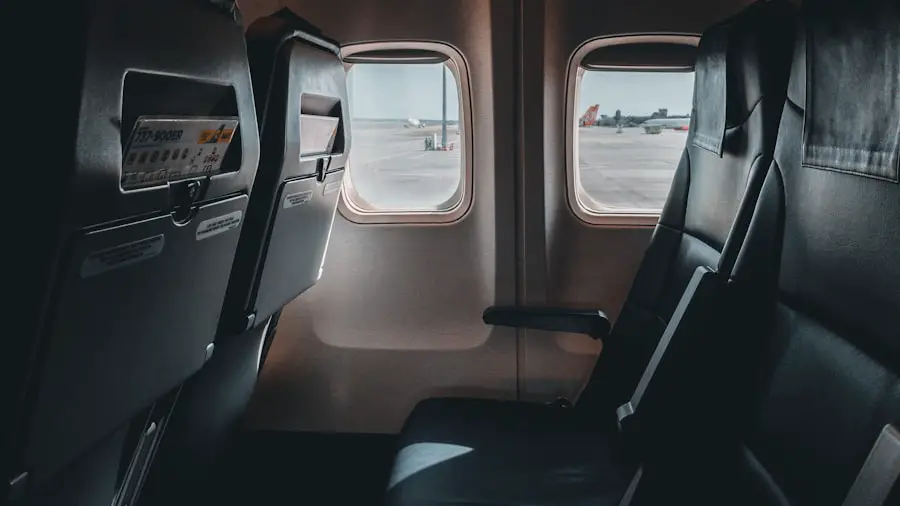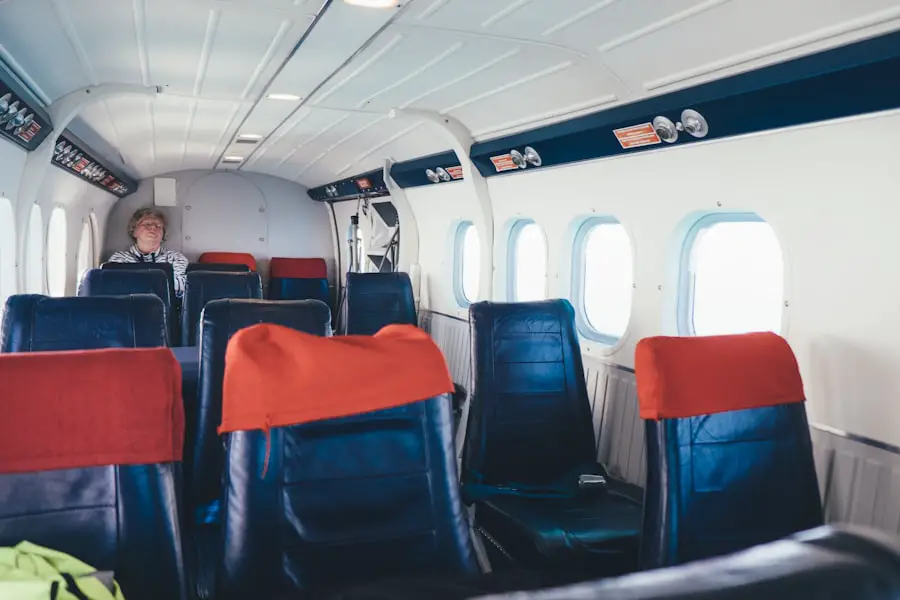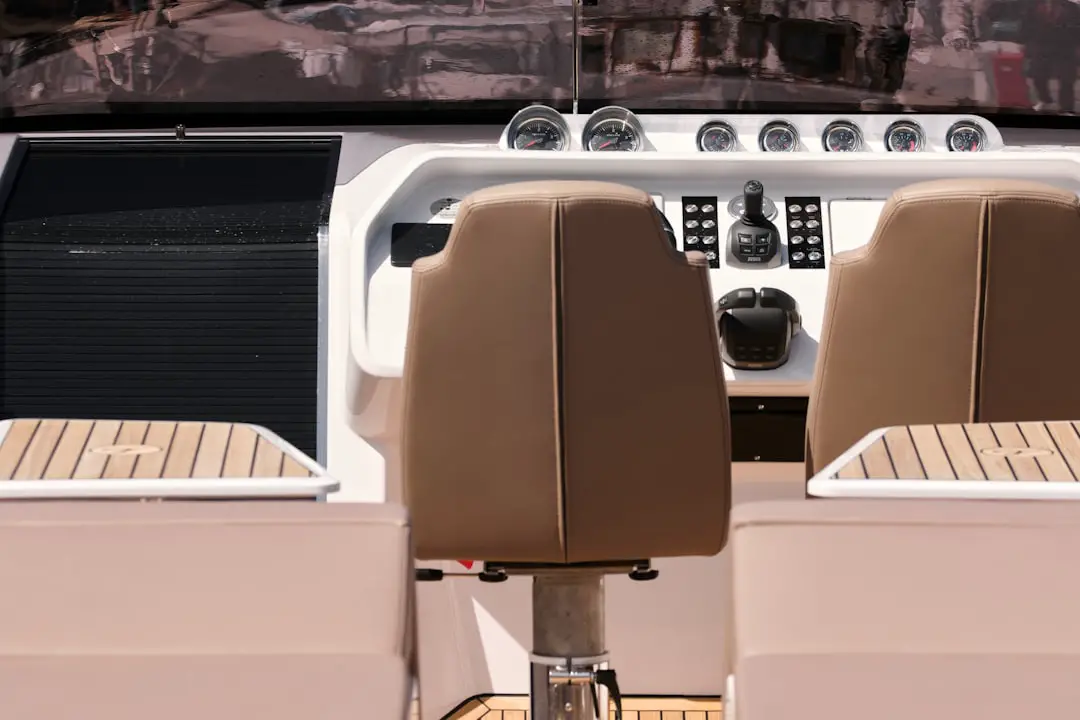The concept of pitch in airline seating is a critical factor that influences the overall travel experience for passengers. Pitch refers to the distance between a point on one seat and the same point on the seat directly in front or behind it. This measurement is typically expressed in inches and serves as a key indicator of legroom and personal space within an aircraft cabin.
As airlines strive to maximize their revenue by accommodating more passengers, understanding the implications of pitch becomes increasingly important for travelers seeking comfort during their flights. In the competitive landscape of air travel, where customer satisfaction can significantly impact an airline’s reputation and profitability, pitch plays a pivotal role. Airlines often advertise their seat pitch as a selling point, particularly in economy class, where space is at a premium.
A greater pitch can enhance the perception of comfort, making it a crucial consideration for passengers when selecting flights. As travelers become more discerning about their flying experiences, the importance of pitch cannot be overstated; it is a fundamental aspect that shapes how individuals perceive their journey from boarding to landing.
Key Takeaways
- Pitch is the distance between a point on one seat and the same point on the seat in front or behind it, and it is a crucial factor in determining passenger comfort in airline seats.
- A larger pitch generally means more legroom and greater comfort, while a smaller pitch can lead to a cramped and uncomfortable experience for passengers.
- Seat width refers to the distance between the armrests of a seat, while pitch refers to the space between seats, and both factors play a significant role in passenger comfort.
- The pitch of airline seats directly impacts the overall passenger experience, affecting comfort, legroom, and the ability to relax during a flight.
- Airlines determine the pitch in their seating configurations based on a variety of factors, including the class of service, aircraft type, and the overall design of the cabin.
How Pitch Affects Comfort and Legroom
The relationship between pitch and comfort is direct and profound. A larger pitch typically translates to more legroom, allowing passengers to stretch their legs and sit comfortably without feeling cramped. For taller individuals, inadequate pitch can lead to discomfort, especially on long-haul flights where they may be confined to their seats for extended periods.
The ability to shift positions or extend one’s legs can significantly alleviate discomfort and fatigue, making the journey more bearable. Moreover, the impact of pitch extends beyond mere legroom; it also affects how passengers interact with their environment. A seat with ample pitch allows for easier access to overhead bins, facilitates movement within the cabin, and provides a more pleasant experience when dining or using in-flight entertainment systems.
Conversely, a cramped seating arrangement can lead to frustration and dissatisfaction, which may overshadow other positive aspects of the flight experience. Thus, airlines must carefully consider pitch when designing their seating configurations to ensure they meet the diverse needs of their passengers.
Understanding the Difference Between Pitch and Seat Width

While pitch is often discussed in conjunction with comfort, it is essential to distinguish it from seat width, another critical dimension of airline seating. Seat width refers to the distance between the armrests of a seat and directly impacts how much personal space a passenger has during their flight. While pitch focuses on legroom and the distance between rows, seat width addresses lateral space and how comfortably passengers can sit side by side.
The interplay between pitch and seat width can significantly influence overall comfort levels. For instance, an airline may offer a generous pitch but pair it with narrow seats, resulting in a cramped experience for passengers who may feel squeezed between their neighbors. Conversely, a wider seat with less pitch may provide a more comfortable lateral experience but could lead to discomfort due to limited legroom.
Understanding this distinction is crucial for travelers who prioritize comfort, as both dimensions must be considered when evaluating seating options.
The Impact of Pitch on Passenger Experience
| Aspect | Impact on Passenger Experience |
|---|---|
| Seat Pitch | More legroom can lead to increased comfort and satisfaction |
| Pitch Variability | Consistent pitch across different flights can improve overall experience |
| Pitch Reduction | Reduced pitch may lead to discomfort and dissatisfaction |
The impact of pitch on passenger experience is multifaceted and extends beyond physical comfort. A well-designed seating arrangement with adequate pitch can enhance the overall ambiance of the cabin, contributing to a more enjoyable flight experience. Passengers are likely to feel more relaxed and content when they have sufficient space to move and adjust their seating position.
This sense of comfort can lead to positive associations with the airline, encouraging repeat business and fostering brand loyalty. Additionally, the psychological effects of pitch should not be overlooked. When passengers perceive that they have enough space, they are more likely to feel valued and respected by the airline.
This perception can significantly influence their overall satisfaction with the flight experience. In contrast, cramped seating arrangements can lead to feelings of frustration and dissatisfaction, which may overshadow other positive aspects of the journey, such as attentive service or quality in-flight entertainment options. Therefore, airlines must recognize that pitch is not merely a physical measurement but a vital component of the emotional experience associated with air travel.
How Airlines Determine Pitch in Their Seating Configurations
Airlines determine pitch based on various factors, including aircraft type, target market, and competitive positioning. The design of an aircraft’s cabin layout is influenced by its intended use—whether for short-haul flights or long-haul international travel—and the demographics of its passenger base. For example, airlines operating primarily in leisure markets may prioritize comfort and spaciousness in economy class to attract families and vacationers, while those focused on business travelers might emphasize efficiency and quick turnaround times.
Furthermore, airlines must balance passenger comfort with operational efficiency. A higher seat pitch may enhance passenger satisfaction but could reduce the total number of seats available on an aircraft, impacting revenue potential. Consequently, airlines often conduct market research to gauge passenger preferences and adjust their seating configurations accordingly.
This research may include surveys or focus groups that assess how much value travelers place on legroom versus ticket price. Ultimately, airlines strive to find an optimal balance that maximizes both passenger comfort and profitability.
The Role of Pitch in Economy, Premium Economy, and Business Class Seats

The role of pitch varies significantly across different classes of service within an aircraft. In economy class, where space is often limited due to higher passenger density, airlines typically offer a standard pitch ranging from 28 to 32 inches. This configuration aims to accommodate as many passengers as possible while still providing a basic level of comfort.
However, some airlines differentiate themselves by offering additional legroom options or premium economy sections with increased pitch—often around 34 to 36 inches—catering to travelers willing to pay extra for enhanced comfort. In contrast, business class seats generally feature much larger pitches—often exceeding 40 inches—allowing for greater recline and overall comfort. These seats are designed not only for relaxation but also for productivity; many business class configurations include features such as power outlets and larger work surfaces.
The emphasis on pitch in business class reflects the expectations of travelers who prioritize comfort during long-haul flights or require space to work effectively while in transit.
Strategies for Finding Comfortable Airline Seats Based on Pitch
For travelers seeking comfortable airline seats based on pitch, several strategies can enhance their chances of securing a pleasant flying experience. First and foremost, researching airlines before booking is essential; many websites provide detailed information about seat configurations and pitch measurements for specific aircraft models. Websites like SeatGuru offer comprehensive databases that allow travelers to compare different airlines’ seating arrangements based on user reviews and expert insights.
Another effective strategy involves utilizing online tools that allow passengers to select their seats during the booking process or check-in. Many airlines provide interactive seat maps that display available seats along with their respective pitches. By choosing seats with greater pitch or those located in premium economy sections when available, travelers can significantly improve their comfort levels during flights.
Additionally, frequent flyers should consider joining loyalty programs that offer benefits such as complimentary upgrades or access to premium seating options.
The Future of Airline Seat Pitch and Passenger Comfort
As air travel continues to evolve, so too will the considerations surrounding seat pitch and passenger comfort. With advancements in aircraft design and technology, airlines are exploring innovative ways to optimize cabin layouts while maintaining or enhancing passenger comfort levels. For instance, some manufacturers are developing new seating designs that allow for greater flexibility in pitch without sacrificing overall capacity.
Moreover, as consumer preferences shift towards prioritizing comfort over cost in certain markets—especially among business travelers—airlines may increasingly invest in improving seat configurations across all classes of service. This trend could lead to a reevaluation of standard pitch measurements in economy class as airlines seek to differentiate themselves in a crowded marketplace. In conclusion, the future of airline seat pitch will likely be shaped by ongoing competition among carriers striving to enhance passenger experiences while balancing operational efficiency.
As travelers become more vocal about their preferences for comfort and space during flights, airlines will need to adapt their seating configurations accordingly to meet these evolving demands.
If you are interested in learning more about airline seats and how to choose the best one for your next trip, you may want to check out this article on how to choose the best travel guidebook for your next trip. This article provides valuable tips and insights on how to make the most of your travel experience by selecting the right guidebook to help you navigate your destination with ease.
FAQs
What is pitch in airline seats?
Pitch in airline seats refers to the distance between a point on one seat and the same point on the seat in front or behind it. It is commonly used to measure the legroom or space available for passengers.
Why is pitch important in airline seats?
Pitch is important in airline seats because it determines the amount of legroom available to passengers. A greater pitch means more legroom, while a smaller pitch means less legroom.
How is pitch measured in airline seats?
Pitch is typically measured from the same point on one seat to the same point on the seat in front or behind it. This measurement is usually taken from the back of one seat to the back of the seat in front of it.
What is the standard pitch for airline seats?
The standard pitch for airline seats can vary depending on the airline and the type of aircraft. However, a typical pitch for economy class seats is around 30-32 inches, while business and first class seats may have a larger pitch.
Can passengers request seats with more pitch?
Passengers can request seats with more pitch, such as those with extra legroom, when booking their flights. These seats may come with an additional fee or may be available to frequent flyers or passengers with special needs.
